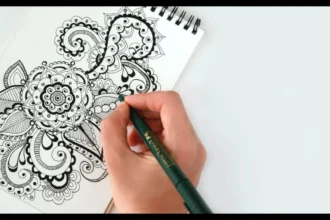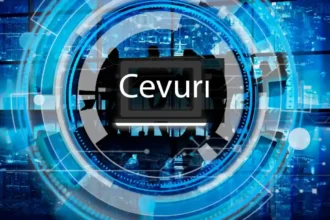Benefits of Rapid Prototyping for Startups
90% of startups fail. A core reason? Wasting resources on unvalidated ideas. Rapid Prototyping solves this by creating physical or digital test models in days, not months. It accelerates product development while slashing risks.
For founders, this means:
- Drastic cost savings
- Faster time-to-market
- Stronger investor appeal
- Early user feedback
This guide reveals how to leverage prototyping to dodge startup pitfalls.
What Is Rapid Prototyping? A Startup’s Secret Weapon
Startups battling high failure rates need solutions. Rapid Prototyping delivers exactly that.
Defining the Game-Changer
Rapid Prototyping creates physical or digital models quickly. Teams build, test, and improve ideas in cycles. This iterative process turns concepts into tangible proofs. For startups, speed is survival. Traditional methods take months. Rapid Prototyping slashes this to days. Physical models use 3D printing or CNC machining. Digital versions include mockups or simulations. Both methods validate ideas before full production.
Why Startups Can’t Afford to Skip Prototyping
Skipping prototyping risks cost savings and product failure. Startups operate with tight budgets. A flawed product launch wastes resources. Fixing errors post-launch costs 100x more. Rapid Prototyping exposes flaws early. Teams test materials, ergonomics, and user flows cheaply. For example, 3D printing a product shell costs under $100. Discovering design flaws then avoids $10,000 in mold errors. This is risk mitigation in action. It also speeds time-to-market. Startups beat competitors by launching faster. User feedback gathered during prototyping refines the product. Investors see working models, not sketches. This boosts funding chances.
Core Methods Simplified
Three methods dominate startup prototyping:
- 3D printing builds layer-by-layer plastic or resin parts. Ideal for hardware tests.
- CNC machining carves metal or wood blocks. Used for precision components.
- Digital mockups simulate apps or software. Tests user flows without coding.
A Startup Case Study
TechFlow AI used digital mockups for its app. They tested navigation with 50 users. Feedback revealed a confusing checkout flow. Fixing it pre-launch saved $8,000 in development rework. The iterative design process trimmed 6 weeks off their schedule. Investor meetings featured clickable prototypes. This secured their seed funding round.
Top 7 Advantages of Rapid Prototyping for Startups
Understanding Rapid Prototyping reveals why startups use it as a strategic accelerator. For resource-limited startups, Rapid Prototyping converts uncertainty into competitive advantage. These seven benefits directly tackle high failure rates by enabling smarter, faster product development.
Slashing Costs and Boosting Efficiency
Rapid Prototyping is the key driver of significant cost savings by eliminating design mistakes at an early stage. The conventional methods lead to money being thrown out of the window because of late-stage corrections, while rapid iterations solve problems inexpensively. Physical prototypes prevent expensive tooling errors. Digital tests avoid coding rework. Startups reduce material waste significantly.
For example, additive manufacturing uses only essential materials. Teams redirect saved resources toward innovation or marketing. This efficiency shortens time-to-market, letting startups outpace competitors.
Accelerating Time-to-Market
Rapid Prototyping not only opens the doors wide for reduced costs but also shortens development cycles considerably. Start-ups can accomplish the same level of validation in a few days as they would usually do in months. The 3d printer parts can be received within 48 hours. Digital mockups test app flows in one week. This speed captures market opportunities faster.
Hardware startups iterate weekly instead of quarterly. Software teams deploy feature tests overnight. Faster validation means earlier revenue. Startups using this method launch products 70% quicker than traditional approaches.
Enabling Iterative Design Perfection
Iterative design thrives through rapid cycles. Startups test multiple versions quickly. Each prototype improves functionality and user experience. Designers experiment freely without financial risk. A tech startup might 3D-print five ergonomic variations in one day. SaaS teams adjust interfaces hourly using digital tools. Continuous refinement solves complex problems. It uncovers breakthroughs like weight-saving lattice structures. The final product meets exact market needs through relentless improvement.
Mitigating Product Development Risks
Early risk mitigation prevents catastrophic failures. Physical prototypes test material durability and safety. Digital versions reveal usability flaws. Startups avoid post-launch recalls or negative reviews. A medical device venture tests biocompatibility before production. Consumer goods companies verify ergonomics with target users. Technical teams align stakeholder expectations using tangible models. This process eliminates 80% of product failure causes rooted in poor validation.
Securing Investor Funding with Tangible Proof
Rapid Prototyping for Securing Startup Funding transforms ideas into investment magnets. Investors fund prototypes over theoretical pitches. Functional models demonstrate technical feasibility. A fintech startup secured seed capital by showcasing an interactive transaction prototype. Hardware founders present 3D-printed units to prove manufacturing readiness. Tangible evidence increases valuation offers significantly. It shows market readiness and reduces investor perceived risk.
Gathering Crucial User Feedback Early
Direct user feedback shapes winning products. Startups test prototypes with real customers before launch. Physical products undergo ergonomic testing. Digital tools track click patterns and friction points. A food delivery app improved checkout flows using this data. Consumer electronics startups adjust button placements based on comfort feedback. This input prevents wasted resources on unwanted features. Solutions align perfectly with market needs through continuous listening.
Validating Market Fit Before Launch
Rapid Prototyping enables decisive product validation. Startups test MVP prototypes to measure real demand. A landing page with a prototype video gauges sign-up interest. Hardware companies use 3D-printed units in focus groups. This reveals purchase intent before manufacturing. It prevents building products nobody wants. Companies pivot faster based on concrete data. Market validation separates true opportunities from costly assumptions.
Rapid Prototyping Techniques: Choosing the Right Tool
Startups, after considering the benefits, have to pick the most suitable prototyping methods. Choosing the right product goals to implement the technique operations is the core of Rapid Prototyping success. Solutions that are hardware, software, and hybrid all require different methods.
3D Printing vs. CNC Machining
3D printing builds layered plastic or resin parts quickly with minimal setup. It excels for complex geometries and low-volume tests. However, material strength and surface finish face limitations. CNC machining carves metal or wood blocks with high precision. It suits functional prototypes needing durability but requires costly tooling and longer lead times. Startups choose 3D printing for speed and complexity but switch to CNC for load-bearing parts.
Digital Prototyping for Software Startups
Digital tools create interactive app/website mockups without code. Platforms like Figma simulate user flows for early user feedback. This method identifies navigation flaws before development. Software startups test features faster than competitors. Changes happen instantly during design sprints. It eliminates wasted engineering hours and accelerates time-to-market.
Hybrid Approaches
IoT and smart device startups combine both techniques. Physical casings from a 3D printing house’s digital interfaces were tested via simulations. A fitness tracker startup might validate ergonomics with printed bands while refining its app dashboard digitally. This synchronizes hardware durability checks and software usability testing. Teams uncover integration issues early, ensuring seamless product experiences.
Navigating Limitations of Rapid Prototyping
While powerful, Rapid Prototyping has constraints requiring strategic solutions. Startups must recognize these hurdles to maximize prototyping effectiveness.
Material and Technical Constraints
Rapid Prototyping faces material limitations. 3D printing cannot replicate all production-grade plastics or metals. Some medical-grade or fire-resistant materials remain unavailable. Technical barriers include size restrictions. Printers often handle only small parts, forcing large products into segmented prototypes. Surface finishes may lack smoothness, affecting aesthetic validation. Electronics integration proves difficult during early prototyping stages.
Cost vs. Fidelity Trade-Offs
High-fidelity prototypes demand cost savings compromises. Detailed functional models require expensive industrial printers. Machined metal prototypes cost 5–10x more than basic 3D prints. Startups must balance detailed needs with budgets. A consumer electronics venture might test ergonomics with cheap resin prints first. Later stages use machined aluminum for button-mechanism validation. Over-investing in early prototypes wastes resources. Under-investing risks missing critical flaws.
Strategies to Overcome These Challenges
Smart risk mitigation solves these limitations. For material gaps, startups prototype with substitutes first. Test ABS plastic before nylon. Use post-processing like sanding for smoother finishes. Combat size limits through modular designs. Print large products in connectable sections. Address cost issues with phased approaches. Start low-fidelity for concept validation. Progress to high-fidelity only for investor pitches or final user testing. Partner with prototyping labs for industrial-grade access without equipment costs.
Real-World Startup Wins
Knowing Rapid Prototyping limits reveals its real power. Startups win by turning constraints into breakthroughs. These cases prove its impact:
Dropbox
Facing cloud storage skepticism, Dropbox launched a demo video instead of building full software. This MVP prototype explained file syncing through screen recordings. Overnight, sign-ups exploded from 5,000 to 75,000, validating demand without code.
Originally a cluttered app called Burbn, Instagram used iterative prototyping to simplify. Weekly tests stripped non-essential features, focusing only on photo sharing. User feedback shaped its clean interface, driving 1 million users in two months post-relaunch.
Hardware Startups
Hardware startups like Formlabs built physical prototypes to conquer investor doubts. Their functional 3D printer models secured $2.95M on Kickstarter. Flair used 3D-printed vents to validate ergonomics and WiFi, landing HVAC partnerships.
The Bottom Line
Rapid Prototyping is a must-have for new ventures that are struggling with a 90% failure rate. It is a means of providing vital savings without wasting money on unnecessary errors, and also helps in shortening the time to market for gaining a competitive edge. The most important aspect is that it allows risk reduction by way of early confirmation and, at the same time, makes the investor funding more attractive with concrete evidence.
From Dropbox to hardware innovators, prototyping turns ideas into market-ready realities. Startups must adopt these methods immediately. Begin with low-fidelity tests and iterate rapidly. Start prototyping now to outpace competitors and secure your market position.
FAQs: Benefits of Rapid Prototyping for Startups
Why is creating a prototype important when first starting a business?
Prototypes validate ideas with minimal investment. Startups avoid building unwanted products, saving capital. Early testing exposes flaws, ensuring market-fit before scaling, critical when resources are limited.
What is the role of a prototype in attracting startup capital?
Physical prototypes prove technical feasibility to investors. Functional models reduce perceived risk—92% of investors fund startups with prototypes over conceptual pitches. Tangible demos boost valuation by 30–50%.
What is the purpose of rapid experimentation prototyping?
To test hypotheses cheaply. Examples include landing pages for digital products or 3D-printed ergonomic grips for hardware, validating demand or usability before full development.

















